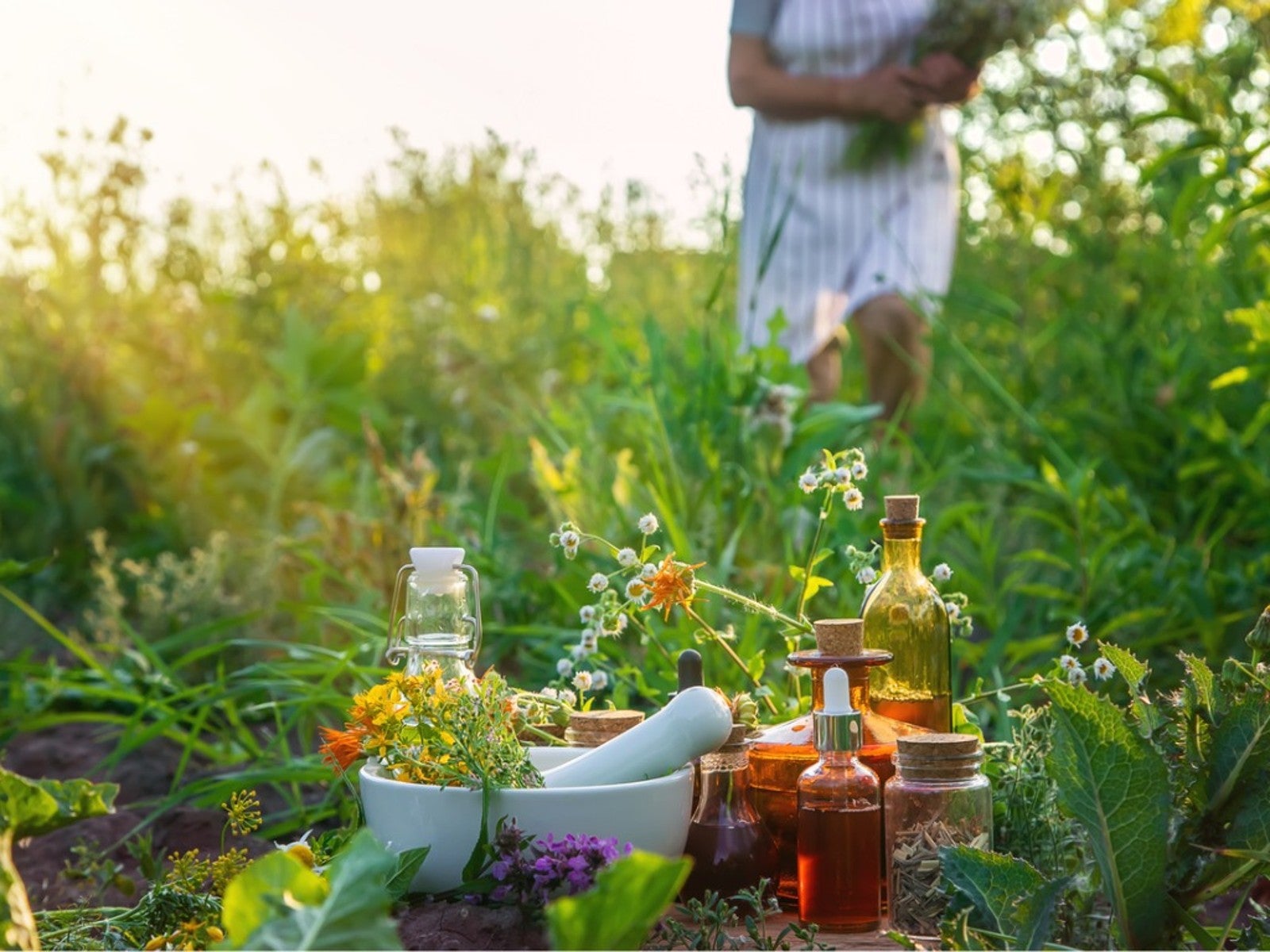Healing Plants For Mind & Body You Can Grow At Home

Archaeological evidence points to the use of wound-healing plants and herbs dating back to 8,000 years ago in China, although the practice of healing with plants likely occurred much earlier. Many modern medicines are derived from these millenia old plants for healing. Today, many people use healing plants and herbs solely or combined with pharmaceutical drugs to heal both the body and mind. The following contains information on a variety of healing plants for home use and how to grow them.
Note: Do not replace any medications without first speaking to your doctor.
Growing Plants for Healing
Research indicates that time spent outdoors has a marked effect on our health. It has psychological, emotional and spiritual as well as physical benefits. Certain plants have also been found to have curative properties.
A type of garden that fosters healing and the accompanying overall sense of well-being is called a healing garden, and you can create one in your own backyard. First though, you need to decide what plants to include. No need to include every healing plant on the planet -- start with a few common healing plants and add to your collection over time.
Best Healing Plants for Home Gardens
Being around plants is therapeutic in general, but there are many plants, often herbs, that may have the power to heal ailments of the mind.
Modern life is fast paced and filled with uncertainty. Some people need help winding down or quelling their anxiety, while others have severe mental illness that requires professional help and often pharmaceuticals.
Of course the best healing plants for your particular home garden will depend on what you find beneficial. The following is a compilation of eight plants useful to the majority of growers.
Gardening tips, videos, info and more delivered right to your inbox!
Sign up for the Gardening Know How newsletter today and receive a free copy of our e-book "How to Grow Delicious Tomatoes".
Healing Plants For Your Mind
Many people are turning to their gardens for help. Plants like ashwagandha, St John's wort and valerian all have purported mental health benefits.
Ashwagandha
Native to India where the root and berries are used in Ayurvedic medicine, ashwagandha is a perennial herb hardy to zone 6. It is said to improve physical and mental health, primarily memory loss.
St. John's Wort
St. John’s wort is native to the temperate regions of Eurasia and North Africa. It is a flowering perennial covered in small, yellow blooms that can grow up to 40 inches (1 m) in height. It has been used in herbalism for centuries. Modern science has proven its benefit as an antidepressant.
Valerian
Valerian is a perennial flowering plant that blooms with aromatic pink or white blossoms which are eaten by some butterfly and moth species. It is said to have a soporific effect and is sold as a dietary supplement to promote sleeping. Valerian is also said to aid with depression and anxiety. Scientific evidence on valerian is inconclusive. It does however, attract cats who are not affected by catnip.
Healing Plants For Your Body
Tumeric
Herbs and other plants have been used for millennia to heal the body. One of the most popular of late is turmeric. Turmeric is sourced from the root of the plant. It can be found in foods and is used as a dye but more importantly, it is touted as a healing aid for everything from allergies to digestive issues, inflammation and respiratory disease, and is even noted to have antiseptic properties.
Ginger
Ginger is another root with the power to heal. It is said to have anti-inflammatory properties, ease sore throats, treat nausea and digestive ailments, and much more. Plus ginger is a tasty and versatile flavoring for foods.
Goldenseal
Goldenseal is one of the top selling herbal supplements in the United States. It is said to be useful as an antiseptic, a boost to the immune system, and an anti-inflammatory. It also has diuretic and laxative properties. Mature goldenseal plants have 2 or more haired stems that grow to about 10-14 inches (25-36 cm) tall. The mid-spring blooms give way to a single red fruit that looks just like a raspberry.
Healing Plants for Wounds
Aloe Vera
One of the most common medicinal plants for wound care is the aloe vera. Most people grow aloe vera indoors but it can also be grown outside in USDA zones 9-11 year round or in containers that can be brought in when the weather heads towards 50 F (10 C). Most of us know of aloe vera’s use on burns and sunburns, but it can also aid topical wounds from radiation toxicity, oral submucous fibrosis, and burning mouth syndrome.
Yarrow
Common yarrow (Achillea) has been used by indigenous peoples, either as a tea to treat colds and headaches or crushed and applied directly to wounds. Amazingly, yarrow can stop cuts and abrasions from bleeding. Interestingly, its genus name is derived from Achilles, a hero of the Trojan war, who applied plant extracts to treat his fallen comrades.
There are literally hundreds of plants with wound healing properties. Maybe yarrow and aloe vera don’t suit your aesthetic or won’t grow in your region, but perhaps witch hazel, fenugreek, arnica, slippery elm, plantain, marshmallow, chamomile or other healing plant will and can be added to your backyard first aid kit.
Note: Do not replace any prescribed medication without first speaking to your doctor.

Amy Grant has been gardening for 30 years and writing for 15. A professional chef and caterer, Amy's area of expertise is culinary gardening.